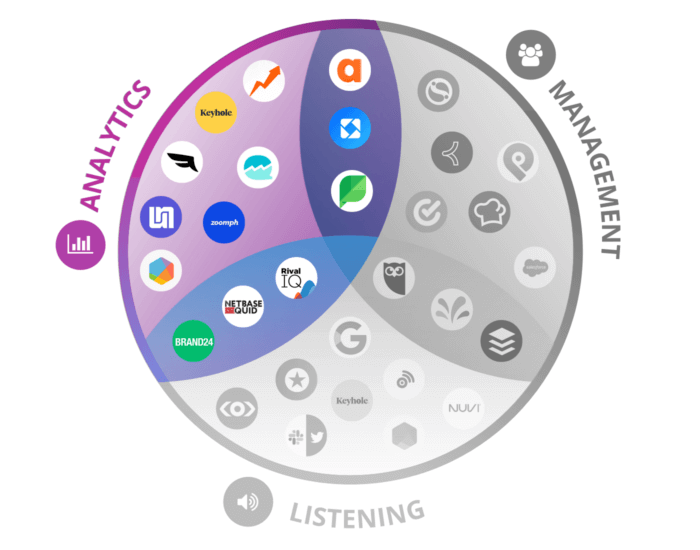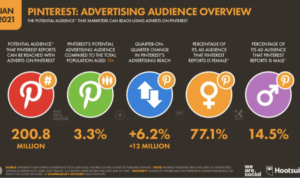Kicking off with Using Social Media Analytics Tools, this is where we dive into the world of data analysis, business strategy, and social media trends with a cool vibe that’s all about getting ahead in the game.
Get ready to explore how leveraging these tools can take your business to the next level and stay ahead of the competition.
Introduction to Social Media Analytics Tools

Social media analytics tools are platforms or software that help businesses track, analyze, and measure their social media performance. These tools provide valuable insights into audience behavior, engagement metrics, content performance, and overall social media ROI. By utilizing social media analytics tools, businesses can make data-driven decisions to improve their social media strategies and achieve their marketing goals.
Importance of Using Social Media Analytics Tools
- Understand Audience Insights: Social media analytics tools allow businesses to gain a deeper understanding of their target audience, including demographics, interests, and online behavior. This information helps in creating more targeted and personalized content.
- Track Performance Metrics: Businesses can track key performance indicators (KPIs) such as reach, engagement, clicks, conversions, and more to evaluate the effectiveness of their social media campaigns. This data helps in optimizing strategies for better results.
- Competitor Analysis: Social media analytics tools enable businesses to monitor their competitors’ social media activities, benchmark performance, and identify areas for improvement to stay ahead in the market.
Popular Social Media Analytics Tools, Using Social Media Analytics Tools
- Hootsuite: A comprehensive social media management platform that offers analytics features for monitoring performance across multiple social channels.
- Google Analytics: While primarily a website analytics tool, Google Analytics also provides social media tracking capabilities to measure the impact of social media on website traffic and conversions.
- Sprout Social: Known for its robust reporting features, Sprout Social helps businesses analyze social media data, track trends, and measure the effectiveness of their social campaigns.
Types of Data Analyzed
Social media analytics tools are capable of analyzing various types of data that can provide valuable insights for businesses. By examining engagement, reach, sentiment, and other key metrics, companies can make informed decisions to enhance their social media strategies and improve overall performance.
Engagement
- Engagement data includes likes, comments, shares, and other interactions with social media posts.
- By analyzing engagement metrics, businesses can determine the effectiveness of their content and identify what resonates most with their audience.
- For example, a high number of likes on a post may indicate that it is well-received by followers, prompting the company to create similar content in the future.
Reach
- Reach data measures the number of people who have seen a particular post or ad on social media.
- Businesses can use reach metrics to assess the impact of their campaigns and determine how well they are reaching their target audience.
- For instance, a high reach but low engagement rate may indicate that the content is not resonating with the intended audience, prompting the company to adjust their messaging or targeting strategy.
Sentiment
- Sentiment analysis involves evaluating the overall attitude or emotion expressed in social media conversations about a brand or product.
- By analyzing sentiment data, businesses can gauge customer opinions, identify trends, and address any negative feedback or issues promptly.
- For example, monitoring sentiment on social media can help companies understand customer satisfaction levels and make improvements to enhance their brand reputation.
Features and Functionalities
Social media analytics tools offer a variety of key features and functionalities that help businesses understand their online presence and audience engagement. By comparing and contrasting the features of different tools, we can see how each one brings unique benefits to the table. Let’s delve into some examples of how specific features have helped businesses improve their social media strategies.
Tool 1: Hootsuite
- Dashboard for monitoring multiple social media accounts in one place
- Analytics reports to track engagement metrics and campaign performance
- Scheduling tools to plan and automate posts across platforms
- Social listening capabilities to monitor brand mentions and industry trends
Tool 2: Sprout Social
- Unified inbox for managing messages and comments from various platforms
- Advanced reporting features for in-depth analysis of audience demographics and sentiment
- Collaboration tools for team members to work together on social media campaigns
- Integration with CRM systems for tracking customer interactions and leads
For example, Hootsuite’s scheduling tools have enabled businesses to maintain a consistent presence on social media, even during off-hours, leading to increased engagement and brand visibility.
On the other hand, Sprout Social’s advanced reporting features have allowed businesses to gain valuable insights into their audience preferences and behaviors, leading to more targeted and effective marketing strategies.
Implementation and Integration: Using Social Media Analytics Tools

Implementing social media analytics tools in a business setting requires careful planning and execution to ensure successful integration. It involves the following steps:
Process of Implementation
- Identify the goals and objectives: Determine what you want to achieve with the use of social media analytics tools. Define clear goals and objectives to guide the implementation process.
- Choose the right tool: Select a social media analytics tool that aligns with your business needs and objectives. Consider factors such as features, functionalities, and ease of use.
- Integrate with existing systems: Ensure seamless integration of the analytics tool with your existing systems and workflows to avoid disruptions and maximize efficiency.
- Train employees: Provide training and support to employees who will be using the tool to ensure they are equipped with the necessary skills and knowledge.
- Monitor and evaluate: Continuously monitor and evaluate the performance of the analytics tool to make adjustments and improvements as needed.
Challenges and Solutions
- Data integration challenges: Integrating data from various sources can be complex and time-consuming. To overcome this challenge, invest in tools that offer data integration capabilities and ensure data consistency.
- Resistance to change: Employees may resist using new tools and technologies. To address this, involve employees in the implementation process, provide training and support, and emphasize the benefits of using social media analytics tools.
- Cost considerations: Implementing social media analytics tools can be costly. To mitigate this challenge, explore different pricing options, consider the ROI of the tool, and prioritize features that are essential for achieving your goals.
- Data privacy and security concerns: Protecting sensitive data is crucial. Ensure that the analytics tool complies with data privacy regulations and implement security measures to safeguard data.
Tips for Integration
- Set clear objectives: Define the purpose and goals of using social media analytics tools to guide the integration process.
- Collaborate cross-functionally: Involve various departments and stakeholders in the integration process to ensure alignment with business objectives.
- Start small: Begin with a pilot project or a limited scope to test the tool and its impact before scaling up.
- Measure success: Establish key performance indicators (KPIs) to track the effectiveness of the analytics tool and make data-driven decisions.





